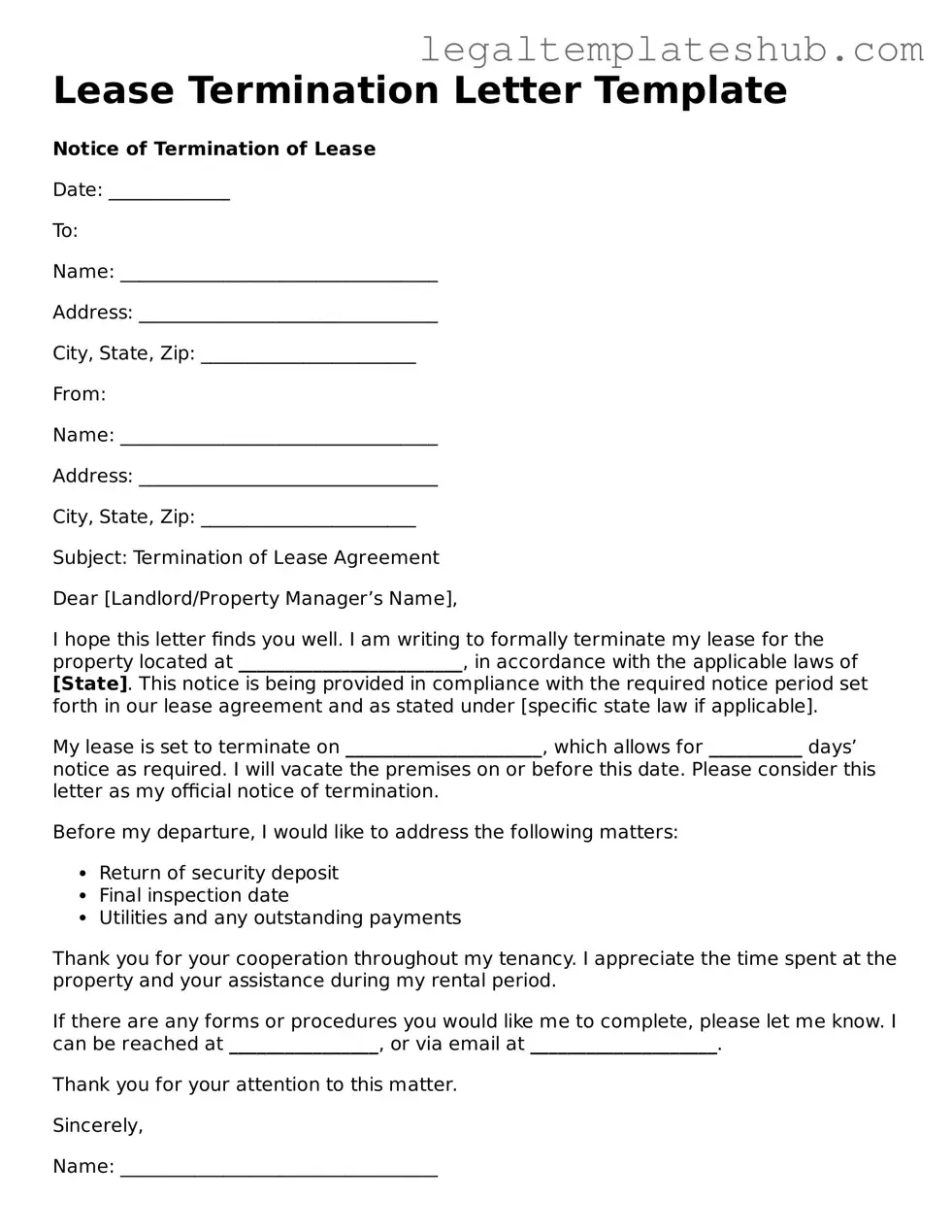Instructions on Filling in Lease Termination Letter
Once you have gathered the necessary information, you’re ready to complete the Lease Termination Letter form. This letter serves as a formal notice to your landlord that you intend to end your lease agreement. Follow the steps below to ensure that you fill out the form accurately and completely.
- Gather Your Information: Collect all relevant details, including your lease agreement, your landlord's contact information, and your intended move-out date.
- Fill in Your Name and Address: Start by entering your full name and the address of the rental property at the top of the letter.
- Include the Date: Write the date on which you are completing the letter. This helps establish the timeline for your notice.
- Add Your Landlord’s Information: Below your address, include your landlord’s name and their mailing address. This ensures the letter reaches the right person.
- State Your Intent: Clearly express your intention to terminate the lease. Use a straightforward sentence like, “I am writing to formally notify you that I will be terminating my lease.”
- Specify the Move-Out Date: Indicate the date you plan to vacate the premises. Make sure this aligns with the notice period outlined in your lease.
- Request Confirmation: Politely ask your landlord to confirm receipt of your termination notice. This can help avoid any misunderstandings.
- Sign the Letter: Conclude with your signature and printed name. This adds a personal touch and authenticity to your letter.
After completing the form, it’s advisable to send it via certified mail or another method that provides proof of delivery. This way, you have documentation that your landlord received your notice. Keep a copy for your records as well.
